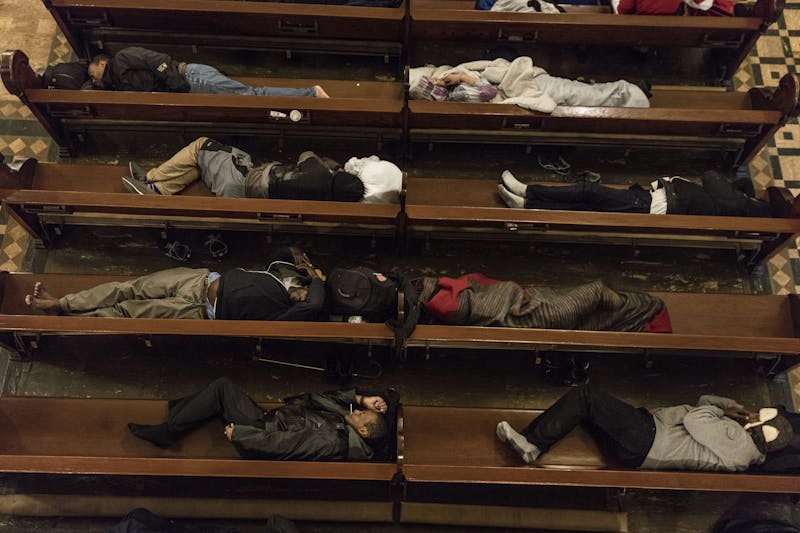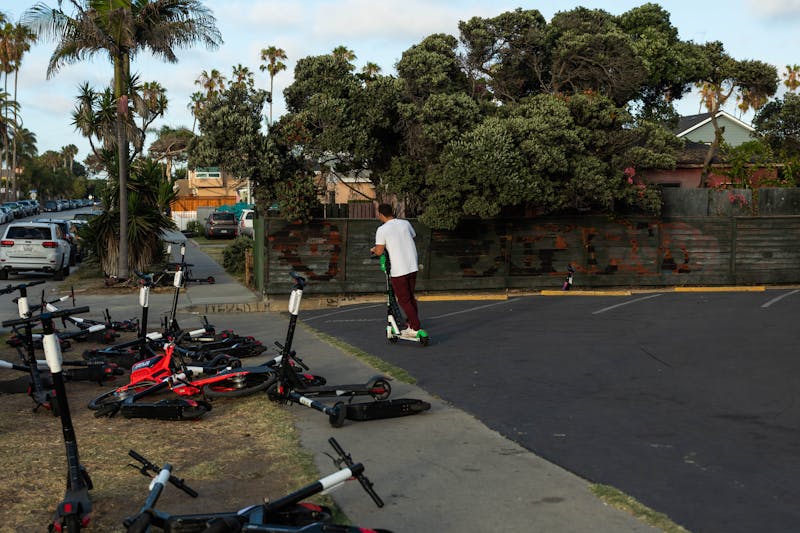Vanessa Bain was less than a year into her gig as an Instacart shopper when the company announced it would no longer allow tipping on its app. Instacart instead began imposing a 10 percent “service fee” that replaced the previous default tip of 10 percent. The change had no impact on customers, who could be forgiven for assuming that the new fee would still go to the workers who shopped for their groceries and delivered them to their homes. “It was deceptive to customers,” Bain said. “They thought they were still tipping us, when instead it went to the company. It wasn’t being passed to us at all.”
When Bain, who lives in Palo Alto, California, became a shopper in 2016, she believed that gig work would provide her with both financial stability and schedule flexibility to take care of her young daughter. However, as independent contractors, Bain and her husband, a fellow shopper, don’t receive sick leave or holidays. And in practice, the “be your own boss” promise of the gig economy instantly vanishes the moment you take on a gig job: It is, instead, a system that relentlessly dictates your schedule. “We are controlled. We are treated like employees but without the perks,” Jennifer Cotten, a Los Angeles area–based shopper, told me. “We’re told what order to deliver in and when to go.”
The indignities of the gig economy are well established at this point, as the laissez-faire labor practices of companies like Uber, Instacart, Door Dash, and Lyft draw more critical scrutiny. Bain, Cotton, and their fellow shoppers are among the millions of precariously employed workers who rely on part-time jobs or side gigs to scrape together a living, all without the safety net of employer-based insurance.
But what is less widely acknowledged is how the gig economy interacts with other trends in California and forces unleashed by Silicon Valley—rising housing costs, choked infrastructure—to make life hell for those who live at or near the epicenter of America’s technology industry. Together, they constitute a nightmare vision of what the world would look like if it were run by our digital overlords, as they sit atop a growing underclass that does their shopping and drives their cars—all while barely able to make ends meet.
By most official measures, California’s economy is humming. Its unemployment rate, at 3.9 percent, is at a record low. It is home to some of the world’s most valuable companies: Google, Apple, Facebook. As The New York Times noted in December, “Its median household income has grown about 17 percent since 2011, compared with about 10 percent nationally, adjusted for inflation.”
But the state’s affluence is spread unevenly, resulting in an increasingly bifurcated economy that privileges the wealthy at the expense of the middle class. This is particularly apparent in cities like San Francisco and San Diego, where the gig economy is most prevalent. Costs of living there are higher than elsewhere in the country, exacerbated by a housing market that, thanks to an influx of cash from the tech sector, has become prohibitively expensive for many people (and has also helped drive a spike in homelessness).
In October, San Francisco Supervisor Gordon Mar released the inaugural “Jobs-Housing Fit Report,” which analyzed job creation in the city from 2010 to 2018 and sought to establish whether there was enough affordable housing to lodge those new workers. Unsurprisingly, the report found that there was plenty of housing for high earners (defined as those making 120 percent or more of the area median income) but less for low- and middle-income earners, with a gap of about 15,000 units between what the city would need to build to accommodate them all and what is actually in the pipeline.
Many of those new low- and middle-income earners appear to be gig workers. Projections from the state Employment Development Department found that the fastest-growing occupations in San Francisco were taxi drivers, chauffeurs, couriers, messengers, and personal care aides. Exact numbers are hard to come by, because gig workers are often considered self-employed—and that very opacity plays into the hands of tech companies that aren’t particularly keen to shine a light on whether these new jobs meet fair labor practices.
California’s bleak housing market is a case study in how income inequality can affect even those who seem to be making a decent living. Palo Alto, for example, where Bain’s family lives, is nestled in Silicon Valley, south of San Francisco, making it one of the most expensive areas in the country. According to the Department of Housing and Urban Development, the average two-bedroom unit in Palo Alto rents for around $3,300 per month. It is even more difficult to afford if you earn an uneven salary, one that’s partially devoted to maintaining a car, paying for a smartphone, and other requirements for earning a living as an app worker. “As shoppers, we absorb the cost of gas, insurance, and our phone plans,” Bain said. “It creates situations where we earn negative wages,” meaning shoppers pay more than they earn.
These broad structural conditions of inequality have accelerated thanks to Big Tech’s penchant for skirting labor laws, such as the minimum wage, through classifying its employees as contract workers. When Cotten first started as an Instacart shopper, she did well, earning up to $22 per “batch.” However, Instacart soon flooded her region with new shoppers, which drove down her wages to as little as $3 an order. The added competition meant that if she couldn’t work, someone else was there to pick up the slack. Meanwhile, declining an order can cost her: Instacart can dock shoppers’ “reliability scores” for turning down orders, putting future work opportunities at risk. “There’s always some loophole to justifying giving us less money,” Cotten said. “It’s a slap in the face. It’s just teaching the algorithm that there’s always someone who is willing to work for that [low level] of pay.”
Rideshare gig drivers have reported earning so little that they resort to sleeping in their cars during off-peak times so that they don’t have to waste time commuting to higher-earning areas when they start driving the next day. Most gig companies don’t offer reimbursements for expenses like gas, parking, or tickets. Nor do they provide adequate insurance to cover wear and tear on personal vehicles, or hikes in data-usage plans for workers’ smartphones.

When Uber and Lyft announced they would guarantee California drivers a $15.60 minimum wage as an alternative to a new law aimed at curtailing gig companies’ misclassification of workers, Chair Ken Jacobs of U.C. Berkeley’s Labor Center found that the pledge was largely an empty one. Once you take into account drivers’ expenses and unpaid time between rides, their true gross wage would be $5.64 per hour. California’s state minimum wage is $12.00 an hour—far more than what rideshare companies were paying after expenses.
“We as a society have agreed that there are certain standards that businesses have to adhere to in terms of treatment of workers in this country,” said Jacobs. “Gig companies have developed a business model that has been geared toward evading labor and employment law and shifting all costs and risk onto workers.”
The gig
economy is also wreaking havoc on the quality of city life. A joint report from Lyft and
Uber published in August showed that rideshares made up noticeable portions of traffic
in cities like San Francisco, where they constitute over 12 percent of cars on the
road in the densest areas. Traffic is so bad that San Francisco in
2016 ranked third in the nation for “worst traffic.” Both Lyft
and Uber have resisted attempts by authorities to force them to comply with
local transit regulations, insisting that they’re
not transportation companies and that the laws don’t apply to them.
There’s also evidence that Lyft and Uber, the two most popular ridesharing companies, contribute to a decline in public transit ridership. City governments thus have less incentive to invest in more infrastructure, creating still more negative repercussions for poorer communities and communities of color. In November, voters in San Francisco elected to levy a 1.5 percent tax on rideshares, in a bid to incentivize riders to consider public transit.
The next frontier in gig companies’ plans to dominate urban life is the “e-scooter,” the motorized, rentable scooters that now litter the sidewalks and streets of many cities. Two of the biggest scooter companies—Lime and Bird, both based in California—rely on independently contracted workers to run around cities to electrically charge the scooters or fix them.
E-scooters first rolled out onto city streets in 2017, even though they lacked the required permits, to the consternation of transit authorities. In 2018, San Francisco ordered all scooters off the streets due to safety concerns; the city restored the companies’ access to the local market only when they were granted operating permits. In Los Angeles, residents filed a class action lawsuit against scooter companies, contending that they should have informed city residents that the scooters were a public nuisance to both riders and pedestrians and that their introduction would cause injuries, even death. Other municipal leaders have likewise decried the threat to public safety created by a largely unregulated new class of scooter drivers. “I don’t want these folks ending up in my hospital at taxpayers’ expense,” San Francisco City Supervisor Aaron Peskin told CNBC in a May 2018 interview. “I want our sidewalks to be safe.”

The companies say that e-scooters are a “greener” form of transit than cars, but the evidence is underwhelming. One study published in August in an environmental journal, Environmental Research Letters, posited that whatever emissions electric scooters saved were offset by the greenhouse gas that gig workers expended chasing after scooters to perform maintenance and charging duties. The companies also say that e-scooters encourage a more diverse ridership, but San Francisco authorities reportedly found that e-scooter ridership tended to skew male, wealthy, and Caucasian.
Gig workers are gradually starting to demand basic workplace safeguards and job security. Vanessa Bain and her fellow shoppers began by rallying to push Instacart to restore in-app tipping. “We’ve never stopped organizing since then,” she said. App-based tipping was ultimately reinstated, but in 2018 shoppers saw a dip in their wages after the app switched from a commission-based payment structure to an algorithm-based one, which began calculating how much a shopper would earn per batch according to variables like weight, number of items, distance, and cost. With each tweak to its algorithm, shoppers lost hundreds of dollars per week. Because Instacart’s algorithm is considered “proprietary information,” shoppers aren’t clued in to how it calculates their wages. Shoppers protested this change, too, launching a three-day nationwide strike in November.
During the strike, shoppers published an open letter to CEO Apoorva Mehta, admonishing him for his abhorrent treatment of his employees while he enjoyed a net worth of $400 million. “Every year we push back as our pay spirals further down the drain, and Instacart’s valuation swells by the billions, and your net worth skyrockets,” the letter read. “When will enough be enough?” Then, without warning, Instacart announced it was getting rid of quality bonuses, a perk given to high-performing shoppers that often pads their meager wages. In January, shoppers called for a nationwide boycott of Instacart.
In September, San Diego City Attorney Mara Elliott filed a lawsuit against Instacart, alleging that it purposely misclassified its shoppers as independent contractors, denying its employees entitlements such as minimum wage, overtime, workers’ compensation, and meal breaks, while depriving the city of money from associated payroll and other employment taxes. “By classifying its Shoppers as independent contractors, [Instacart] contributes less to California’s unemployment insurance, disability insurance and other state and federal taxes,” the lawsuit wrote. “In California specifically, such misclassification contributes to a loss of payroll tax revenue to the State of approximately $7 billion per year.”
Five days after Elliott filed suit, Governor Gavin Newsom signed into law Assembly Bill 5, or AB 5, which codified a 2018 California Supreme Court decision that established criteria to determine whether a worker was an independent contractor or employee. The bill went into effect on January 1.
Bain welcomed the new law. “AB 5 has the ability to totally and completely change the future of labor,” she said. “There will be a struggle between protecting traditional employment rights and against companies looking to opt out.”
Other workers have assailed the law’s other provisions. For example, it allows freelance journalists to write only up to 35 pieces for an outlet per year if their job is solely to “disseminate the news,” depriving those journalists of potential income. (There are exceptions, such as if the journalist in question is making twice the minimum wage in a 40-hour week, and if they’re creating work that is “original and creative in nature,” as opposed to just straight news reporting.) In November, truck drivers in California filed a suit against their reclassification as employees because they perform work outside of the usual course of business.
New Jersey and New York have similar legislation pending that lawmakers hope will avoid the pitfalls that AB 5 has run into. As New Jersey’s Senate President Stephen Sweeney told NJ.com, “The amendments to the bill will continue to ensure the ability of legitimate independent contractors to pursue their work at the same time they safeguard against misclassification.”
It remains to be seen whether AB 5 and similar state legislation will ultimately bring gig companies to heel. Formal classification as full-time employees would guarantee gig workers like Bain the perks of regular employment. California’s gig companies now have no choice but to offer their employees these bare-minimum protections and benefits, though a few have pledged to overturn the law at the polls.
AB 5’s reclassification provision would also allow gig workers to unionize, granting them a modicum of protection. Big Tech greeted previous unionization efforts with outright hostility. In November, Google publicly fired five engineers involved in union activity. Other companies, like Uber, use antitrust law to bar drivers from collective action to address their concerns.
A more radical approach would be to break up the Big Tech monopolies that have such a tight grip on California and its economy, making it more difficult for these companies to dictate the terms of employment. Presidential candidates such as Bernie Sanders and Elizabeth Warren have vowed to dismantle giants like Facebook and Google if elected. Sanders’s plan, arguably the most ambitious, would order companies to offer workers more benefits and higher wages and pensions. Workers would also need to make up at least 45 percent of companies’ board memberships, ensuring that they would have a seat at the table when executives make decisions that affect their livelihood.
“It’s hard to understand what it’s like to be bought by an app, to have no recourse for how to collect wages or even have minor issues addressed,” said Bain. “We need the protections of an employment structure.”
But even basic employment protections won’t be enough to offset the fallout from the tech economy. The government will have to step in to smooth out disruptions in the housing market (as Warren and Sanders have proposed to do). The government will have to ensure that public transit is widely available and efficient (as the Green New Deal aims to do). Because for all its promises of changing the world for the better, Silicon Valley has other priorities.
